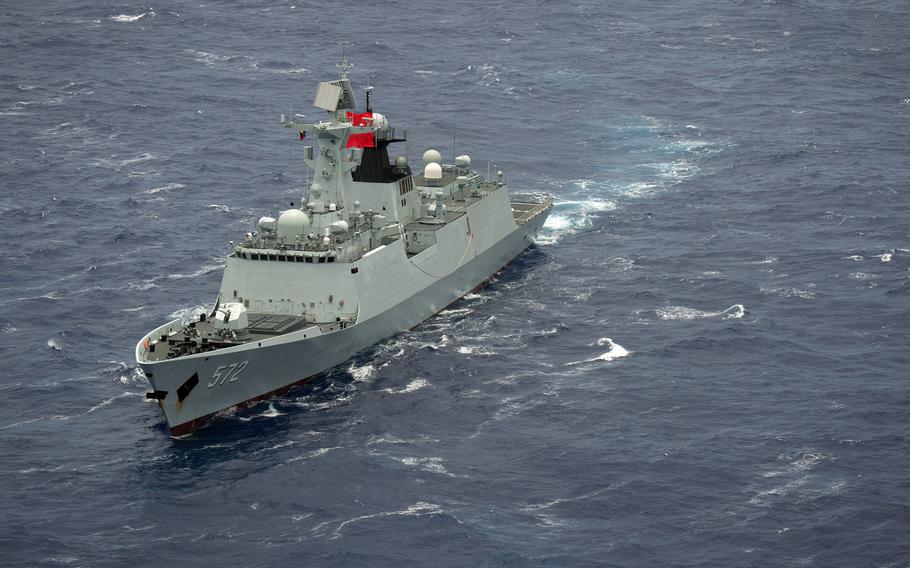
The Chinese multi-role frigate Hengshui steams in close formation with ships representing 13 nations during the Rim of the Pacific exercise in July 2016. China spent the second most on defense worldwide in 2020, after the U.S., according to an International Institute for Strategic Studies report released Feb. 25, 2021. (Ace Rheaume/U.S. Navy)
The U.S. and China led the growth in global defense spending, which hit a new high in 2020 despite the economic stress brought on by the coronavirus pandemic, a report said Thursday.
In its annual report on military power, the International Institute for Strategic Studies said total military expenditures added up to $1.83 trillion in 2020, a 3.9% increase over the previous year. “This came despite the coronavirus pandemic and the subsequent contraction in global economic output,” the London-based think tank said in a statement.
The United States remained the top spender, accounting for 40.3% of global spending. But China and other Asian powers concerned about Beijing’s rise also spent more, albeit at a somewhat slower pace than in 2019 because of the pandemic, IISS said in its “Military Balance” report.
In Asia, overall spending was up 4.3%, down from the 4.9% growth rate of the previous year. Beijing boosted expenditures by $12 billion, or 5.2 %, with total spending at $193.3 billion.
However, IISS and other research groups have questioned China’s budget transparency in recent years. The Stockholm International Peace Research Institute pegged Chinese defense spending at $261 billion in 2019.
China’s maritime paramilitary forces are using facilities in the South China Sea as forward operating bases, the report noted. China has also built artificial islands in the sea over the last decade and constructed bases on natural features claimed by other nations in the region.
“Beijing seems intent on achieving primacy in its littoral areas,” IISS said.
Meanwhile, China’s navy has maintained an “over-the-horizon” presence focused on extending its reach.
China’s corvette numbers have more than doubled in the last five years, reaching 55 in 2020, IISS said. Beijing is also boosting its anti-submarine warfare capabilities while expanding its fleets of transport ships and heavy transport aircraft.
After the U.S. and China, the top spenders were India, Britain and Russia.
Total Russian military expenditure was set to fall from over 4.1% of gross domestic product in 2020 to under 3.8% of GDP by 2023, the report said.
Defense spending among Europe’s NATO members has increased by nearly 20% since 2014, which is when allies began boosting expenditures after years of budget declines. The increases came after Russia’s intervention in Ukraine, which sparked new security concerns in Europe. European defense spending grew 2% last year, compared to a 4.1% boost in 2019.
IISS said it appears NATO allies remain committed to increasing their defense budgets in 2021 and beyond, signaling an “intention to avoid the cuts that followed the 2007−08 financial crisis.”
“If these spending plans continue on their current trajectory, in 2021 Europe could be the region with the fastest growth in global defense spending,” IISS reported.
vandiver.john@stripes.com Twitter: @john_vandiver